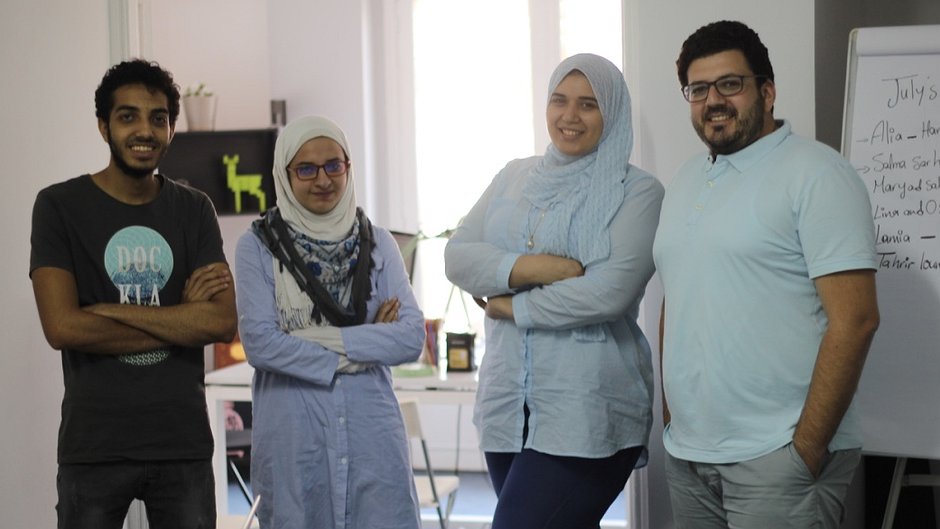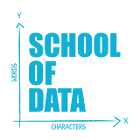
Meet the man behind the first Arab data journalism network
When it comes to data journalism in the Middle East, one name definitely stands out. Amr El Eraqi is the data journalist spreading data journalism to the Middle East. In 2012, he launched infotimes.org - the first Arabic website specializing in data journalism in the region. Since then, he and his organization have both been nominated for GEN Data Journalism Awards. Once in 2015 as an individual, and the second in 2016 for the best data visualization website of the year.
His goal was always to introduce Arab journalists to the concept of data visualization as a new tool for storytelling, as the site grew so did the interest of Arab journalists in the field of data journalism. It is because of this that Amr and a team of nine recently launched the first Arab Data Journalism Network (ADJN). We spoke with Amr to learn more about the network and how it’s changing the scene for Arab journalists.
1. Where did the idea of launching the Arab Data Journalist Network come from?
Data journalism has witnessed increased attention over the past 5 years worldwide, however in the Arab world it is only in the past two years that journalists have shown interest in this field.
The idea of creating the network came up during a conference that was held last year in Cairo. The conference brought together more than 350 Arab journalists interested in data. We discussed the data journalism opportunities and challenges in the Arab world and the need to have a hub where we could share our expertise with one another and the idea of the ADJN was born.
2. Tell us more about the Network and the services it will be offering?
We launched our website 2 months ago in 3 languages. Our goal is to support data journalism in the Arab region and to help Arab journalists enhance their abilities and learn new tools that could be used in telling data-driven stories in a professional way. In addition to the networking opportunities, the site provides Arab journalists with local and international data-related news, training opportunities, job vacancies, and specialized articles by Arab and international experts.
3. Why the focus on creating Arabic content in this field? Why not rely on existing English content?
The lack of Arabic educational content that focuses on data journalism is the main reason we wanted to create our own content instead of relying exclusively on translated material. There is a need to have a combination of both types of content that’s for sure however journalism schools in the Arab world are starting to realize the importance of teaching data journalism in their classes. For instance two of my books “Data Journalism Fundamentals" and “Data Journalism Handbook" for covering human rights issues “ have been used by Arab universities as part of their curriculum.
4. Is the network exclusive for Data Journalists and how can journalists contribute to the network?
Network membership is open and free for all Arab journalists and press organizations interested and working in Data Journalism. Members can participate in data-journalism-specialized training, conferences, seminars inside and outside the Arab region. Journalists can contribute any data-journalism-related articles, stories or videos.
5. How has the response been so far?
Today, the network includes five media, research and consulting Arab institutions specialized in Data Journalism, along with 30 journalists from several Arab countries. Since launching the site, we receive 1000 visits per day. We have also successfully collaborated with two organizations; “Ain Infographic Magazine”, a Syrian magazine specialized in data journalism and “Data 22”, an Arabic news site specialized in infographics, studies, statistics and data journalism.
6. What are the future plans of the network?
We are currently planning for a Data Journalism conference in November. We also hope to collaborate with as many organizations, journalists and media outlets as possible in order to keep up with data journalism training and content creation in other parts of the world.
Interested in learning more about data visualization? Check out Amr’s Infotimes course “Visualise your data with the best charts and graphs”.
Related courses

90 mins
 School of Data
School of Data
90 mins
 School of Data
School of Data Rory Peck Trust
Rory Peck Trust
50 mins
 Rory Peck Trust
Rory Peck Trust
Blogs

6 useful resources for journalists covering Covid-19
With a global pandemic spreading throughout the world, journalists are under increasing pressure to report accurate and relevant news for the masses. Often when covering a crisis, those on the reporting frontlines compromise their physical safety and mental health. To show some solidarity, the Advocacy Assembly team curated a list of useful resources from other organisations leading the way on this.

5 ways to find data for your next story
Data journalism is fast becoming a big trend in newsrooms across the globe. However, data isn’t always so easy to find. Here are five ways to get data for your next article.



